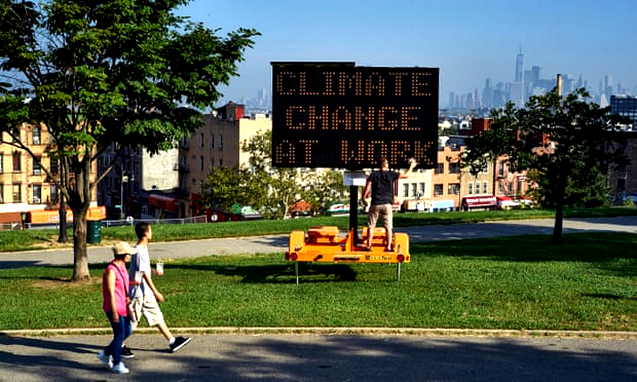Fairfax - Peter Hannam
Tropical corals have been identified off Sydney's northern beaches
and are "absolutely proliferating", providing habitat for a range of
other species typically found much further north, according to the diver
who found them.
Josh Sear, an underwater naturalist and
photographer, has watched branching corals - whose scientific name is
Pocillopora aliciae
- gain purchase on large sandstone boulders in the Cabbage Tree Bay area near Manly in the past couple of years.
 |
| Newcomers: A headband damselfish swims amid a hard coral species now found off waters near Sydney. Photo: John Sear |
Initially
in waters of about 13-15 metres depth, the corals have spread to the
nearby popular Shelly Beach region and are found at depths of about
three metres.
Remarkably, the corals are already providing habitat
for a range of tropical fish and crab species not normally found this
far south.
"Every year there are new ones coming down," Mr Sear said. "These are way out of their normal range."
Species are shifting globally as temperatures rise with climate change.
Corals in Japan, for instance, have been moving poleward at the rate of 14 kilometres a year. In Australia, it is the strengthening and warming East Australian Current driving species southwards along the east coast.
 |
| Coral coloniser: The Pocillopora aliciae species of coral is now proliferating off the coast near Manly. Photo: John Sear |
David Booth, a marine ecologist at the
University of Technology Sydney, said the corals being found off Manly
had previously been recorded off Port Stephens about 120 kilometres to
the north.
"As far as we are aware, this is the furthest south of any tropical coral recorded," Professor Booth
wrote in a paper published last month in the
Coral Reefs journal.
"There's a thermal niche that didn't exist before," he told Fairfax Media.
 |
| A trapezia crab, which typically spends
its whole life within the Pocillopora species of coral, has also been
found in waters off Sydney. Photo: John Sear |
Corals
"are the start" for species migrating since they provide shelter and
food for a range of other creatures such as fish and crabs that are now
showing off Sydney, he said.
"It's like new apartment blocks have arrived in town," Professor Booth said.
A mystery about the multi-species migration, though, is "how the heck they got here", he said.
Symbiotic moves
For
instance, Mr Sear has identified and photographed a species of goby and
shrimp that co-exist in the tropics normally 1000 kilometres to the
north.
The shrimp is blind and digs holes for the goby, which in turn protects it.
Even with the symbiotic relationship, it remains unclear how both species so quickly arrived this far south, Mr Sears said.
 |
| Travelling south: a tropical goby and a
shrimp that have a symbiotic relationship can now be found off Sydney’s
northern beaches. Photo: John Sear |
Professor Booth said the key may be the increasing ability of coral
larvae and other species to survive through winters as waters warm.So
far, there is little sign that the newcomers have dislodged other
species in the Sydney areas at least, although it has happened elsewhere
along the east coast.
"The
big boulders of sandstone are just perfect for corals," Professor Booth
said, noting the area is known locally as "the Barrens". They're "not
so barren now", he said.
The
Cabbage Tree Bay area is a protected zone, and earmarked to form part
of the NSW government's proposed marine park for the Sydney region.
 |
| A damselfish swims near corals off Manly, on Sydney's northern beaches. Photo: John Sear |
Reef stresses
Tropical species
may be expanding their range with warmer waters but the same force -
climate change - is also playing havoc where sea temperatures rise too
high.
A paper out on Wednesday in
Nature Communications
found the mass bleaching that killed about half of the Great Barrier
Reef's corals over two consecutive summers did not spare deeper reefs
either.
The researchers, including Ove Hoegh-Guldberg and other
Australian-based scientists, found a summer upwelling of cooler water
had provided "thermal relief" for corals in 2016.
That
upwelling, however, subsided, leading to severe bleaching of 40 per
cent of the deep reefs and about 6 per cent mortality, the paper found.
While
much less than the death rates of shallow-reef corals, the delayed
impacts of the bleaching may have triggered more mortality after the
surveys were done.
The researchers noted deeper corals could
provide a source of larvae that can help the recovery of harder-hit
shallow reefs. However, that aid would be limited since the deeper reefs
are home to a relatively small proportion of species compared with
those closer to the surface.
Links








